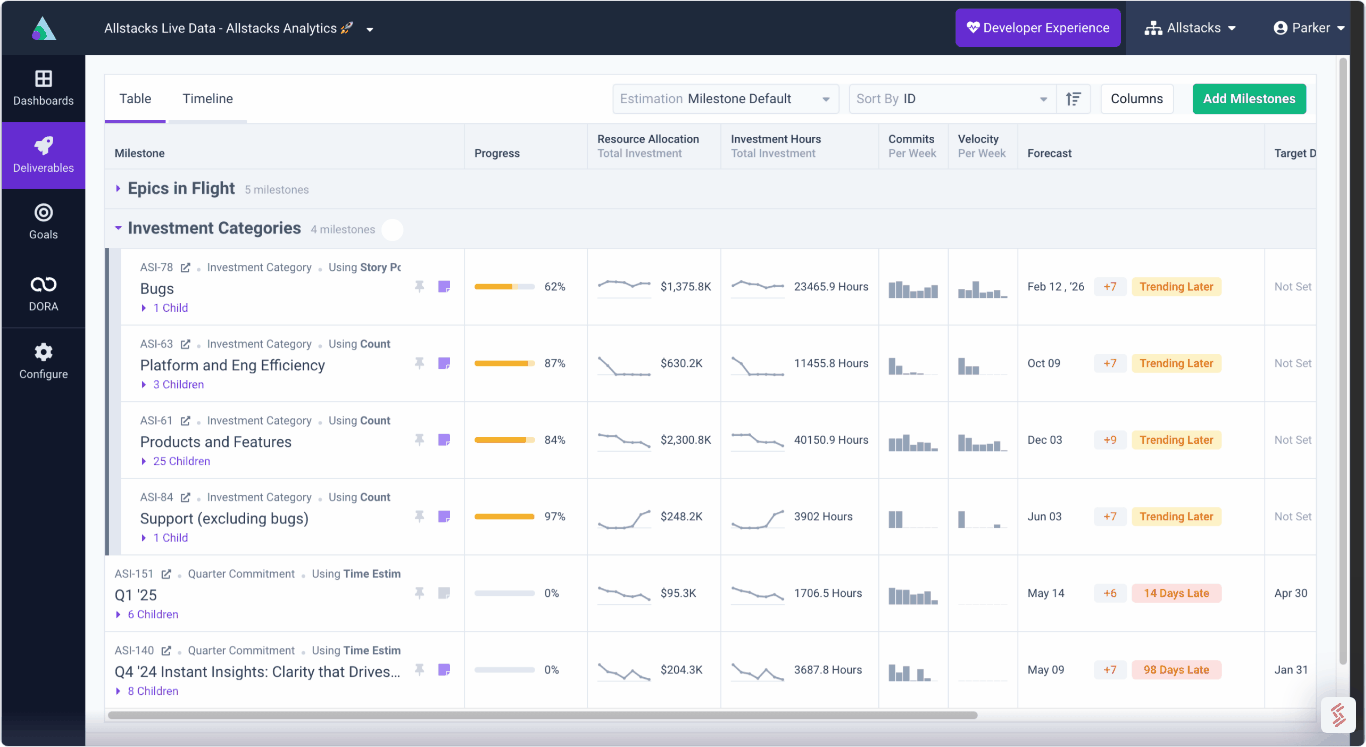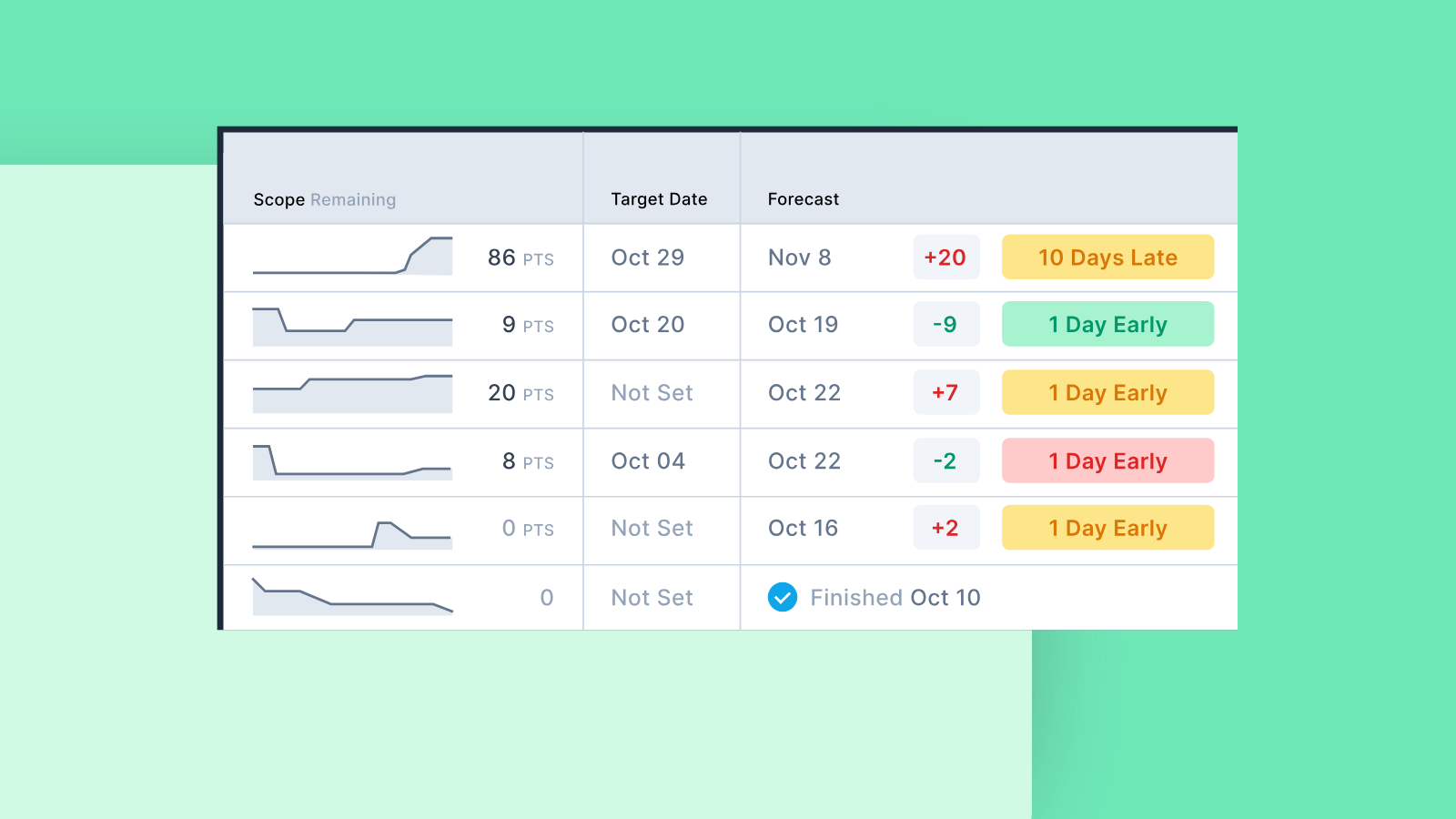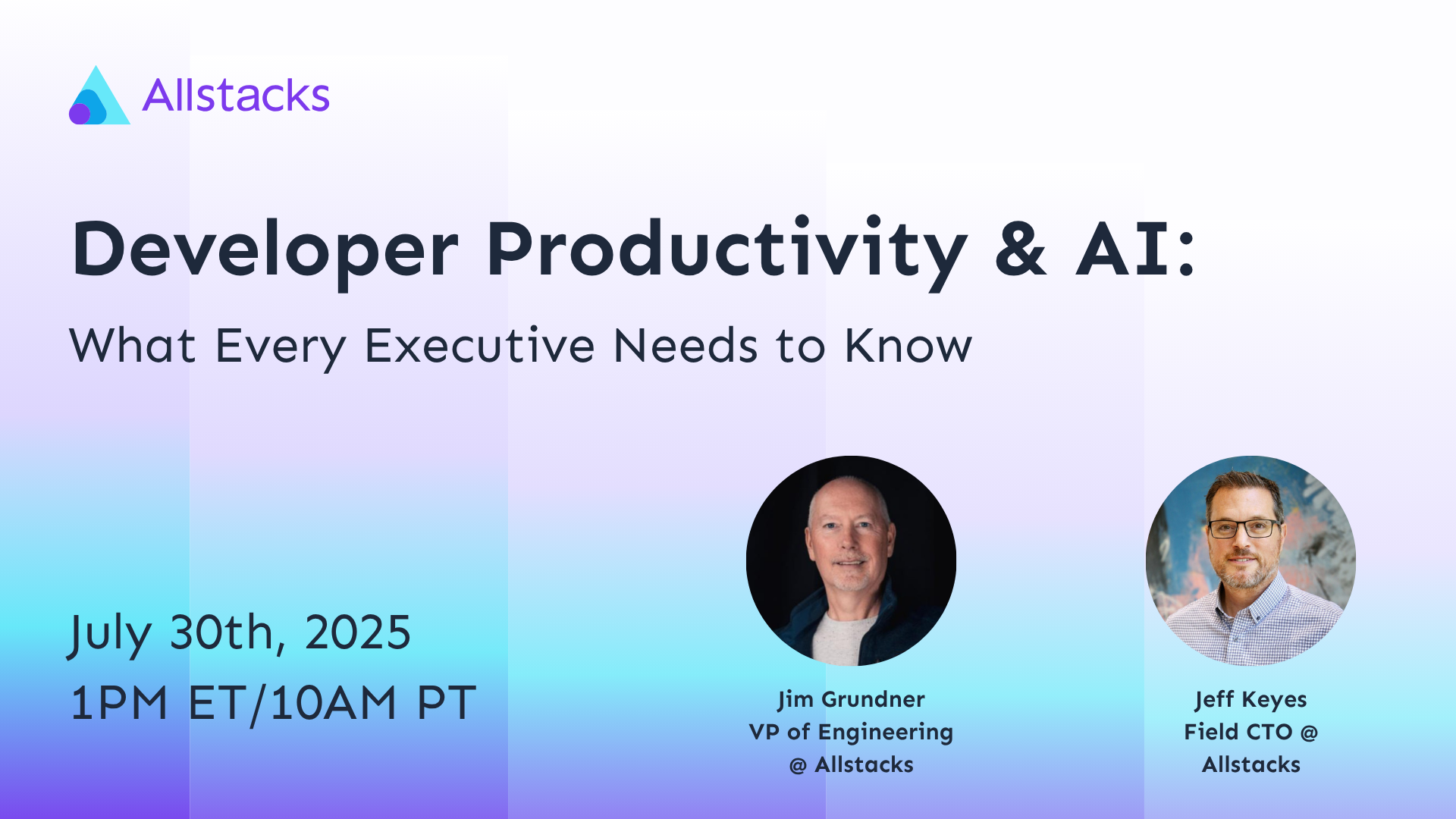.png)
Software Engineering Intelligence
-
Intelligence Engine
On-demand exhaustive AI-analysis
-
Engineering Investment
Complete visibility into time & dollars spent
-
360º Insights
Create meaningful reports and dashboards
-
Project Forecasting
Track and forecast all deliverables
DevEx
-
Developer Surveys
Create and share developer surveys
Software Capitalization
-
R&D Capitalization Reporting
Align and track development costs
From Dashboards to Deep Research: The AI-Native Approach to Engineering Leadership
Your engineering team just doubled in size. Maybe more than doubled. You didn't hire anyone.
.png?width=1600&height=900&name=Copy%20of%20Blog%20Template%203%20-%201600x900%20(1).png)

AI coding agents are writing thousands of lines of code daily across your teams. Developers are becoming orchestrators rather than authors. Daily code output that used to be 50-100 lines per developer can now hit 500+ with AI assistance. And if you're still measuring productivity the old way, you're solving yesterday's problem.
"I don't want my developers writing code anymore," a CIO told me last week. "I want them orchestrating agents that write code for them."
That statement isn't controversial—it's already happening. Everything is changing—not just code velocity, but team makeup, pipeline design, and how work flows from ideation to production.
The Bottlenecks Just Shifted—And Amplified

Here's the paradox: AI agents aren't just generating code faster than any human developer—they're transforming requirements production, product validation, testing, environment automation, and more. This is sparking a reimagination of not just the team, but the entire pipeline.
But every constraint in your delivery system? Still there. And now under exponentially more pressure.
Code review processes designed for human-speed development are buckling under AI-generated volume. CI/CD pipelines are running longer, becoming new constraints in delivery velocity. QA capacity, DevOps throughput, requirements refinement—whatever wasn't writing code before is now the bottleneck on steroids.
Meanwhile, the cognitive load intensifies across the entire team. Developers are mastering AI orchestration while maintaining focus in an already distraction-heavy environment. Product managers are experimenting with "vibe coding" solutions and potentially checking them in. You've essentially added brilliant junior contributors across your entire delivery pipeline—ones who can produce work at superhuman speed but lack context on your architecture, tribal knowledge, business domain, and team dynamics.
Imagine the scenario: Your PM vibe codes a feature validation, an AI agent writes the implementation, another AI generates the tests, and automation spins up the environment. Who's ensuring coherence? Who's maintaining strategic alignment? Who's managing the coordination overhead?
But Here's What This Transformation Really Exposes
This shift reveals a problem that existed long before AI coding agents arrived—and makes it exponentially worse.
Engineering teams have never had the bandwidth for comprehensive analysis of development patterns across the entire SDLC. Many stakeholders lack the technical expertise to understand what's really happening in development. Organizations need the depth of insight that senior engineering consultants provide—exhaustive multi-layer analysis across code, processes, and people—but can't afford to staff teams of expert analysts working continuously across every project.
The result? Critical optimization opportunities go unnoticed. Technical debt accumulates. Workflow bottlenecks compound. Delivery risks remain hidden. Systematic investigation requires expertise, time, and consistency that human teams cannot deliver at scale.
Traditional approaches force an impossible choice: rely on superficial dashboard metrics that miss critical patterns, or invest expensive senior engineering time in manual deep-dive analysis that can only cover a fraction of projects. Neither approach scales to meet modern development complexity.
And now your "team" is 2-3x larger, working across a more complex pipeline, at higher velocity.
The gap between what you need to understand and what humans can comprehensively analyze just widened dramatically.
Think about pattern detection. Humans are good at finding obvious patterns in small datasets. But AI? AI can exhaustively analyze development patterns across your entire value stream—from ideation through production—with consistency and speed that human analysis simply cannot match.
It's like solving a sudoku puzzle. A human can do it. But AI will find the solution faster, more reliably, every time. At scale.
Engineering Intelligence Must Evolve Beyond Human Limitations
Traditional dashboards show you what happened after problems materialized. They help you spot surface-level issues, then kick off your investigate-analyze-execute cycle.
Observability tools alert you when thresholds are breached.
But neither approach addresses the fundamental constraint: comprehensive analysis requires more expertise and bandwidth than your team has.
What you actually need is intelligence that works like having senior engineering consultants analyzing your entire operation 24/7—but with AI-powered consistency, speed, and depth that human analysis cannot match.
Intelligence that:
- Works proactively across your entire delivery pipeline, from ideation through production
- Constantly analyzes patterns, risks, and opportunities across code, processes, and people
- Provides exhaustive multi-layer analysis that humans lack bandwidth to deliver
- Connects insights before small issues cascade into delivery failures
- Scales to meet the pace and complexity of AI-assisted development
This isn't about better dashboards or faster investigation tools.
It's about intelligence that continuously investigates for you—finding the patterns, risks, and opportunities that human teams will never have time to uncover. Intelligence that doesn't just help you analyze faster, but does the analysis you would never get to at all.
You need AI-powered engineering intelligence to manage AI-assisted development teams. Intelligence that maintains strategic control over operations that now extend far beyond human analytical capacity.
What's Next
We're not just theorizing about this future—we're building for it. At GitHub Universe, we'll be sharing our approach to this new era of Engineering Intelligence and how it addresses the challenges we've outlined here.
This isn't about going faster. It's about achieving a level of insight and control that was never possible before—and is now essential.
Want to be part of shaping this evolution? We're forming an early adopter group to help define what Engineering Intelligence looks like in the age of AI-assisted development. Stay tuned for details on how to join.
The world of software development is changing. The way we lead engineering teams must change with it.




